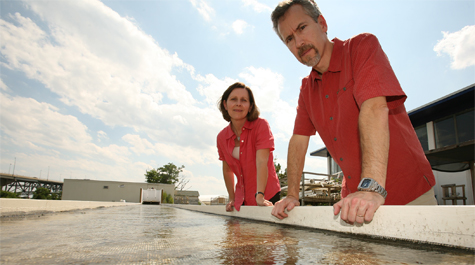ChAP scientists comment on benefits of algal biofuel
A letter signed by several scientists involved in the Chesapeake Algae Project (ChAP) was published in the Dec. 4 issue of the journal Science.
Responding to a July piece on biofuels in the journal’s Policy Forum section, the letter points out the environmental benefits of using algae as feedstock to produce biofuels. Emmett Duffy, Elizabeth Canuel, Walter Adey and John Swaddle all signed the letter, which indicates that algae feedstocks can be grown with low greenhouse-gas emissions and without competing for arable land and water that might otherwise be used to grow food crops.
Bioalgae also is efficient: The authors point out that if the same acreage used to grow soybeans had been used for algal feedstock cultivation, the resulting biofuel would have displaced more than 100 percent of the U.S. annual petroleum diesel consumption. The soybeans only would have accounted for 6 percent, they say.
“Microalgae are typically at least an order of magnitude more productive than even the fastest growing terrestrial feedstock crops, require no soil, and can be grown in eutrophied water (fresh or saline), which is unsuitable for agriculture or human consumption,” the letter reads.
ChAP, based at William & Mary and its Virginia Institute of Marine Science, is a collaboration investigating the use of algae as a feedstock for the production of a number of potential alternative fuel products, ranging from biodiesel to jet fuel. The Norwegian energy corporation Statoil has seeded the enterprise with an initial $3 million investment. Other key partners are the Williamsburg energy advisory firm Blackrock Energy, the University of Maryland, the Smithsonian Institution, the University of Arkansas and HydroMentia, a Florida company that works with water-treatment technologies.
Duffy is the Loretta and Lewis Glucksman Professor of Marine Science at VIMS and Canuel is professor of marine science, also at VIMS. Swaddle is director of the Environmental Science and Policy Program and associate professor of biology at William & Mary. Adey is with the Smithsonian Institution.
Their letter goes on to point out that as algae grow, they also remove contaminants and excess nutrients from waterways. “Although rigorous life-cycle analyses are not yet available, the prospects for carbon-neutral or negative production of algal fuels on commercial scales appear bright,” the Science letter concludes.
















